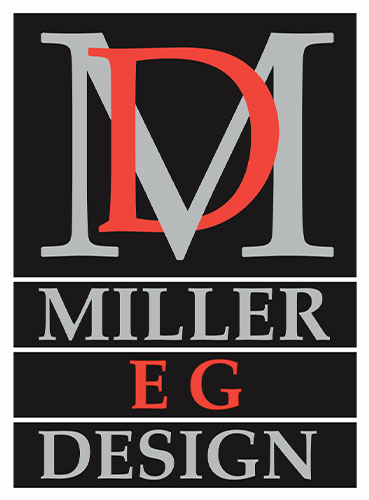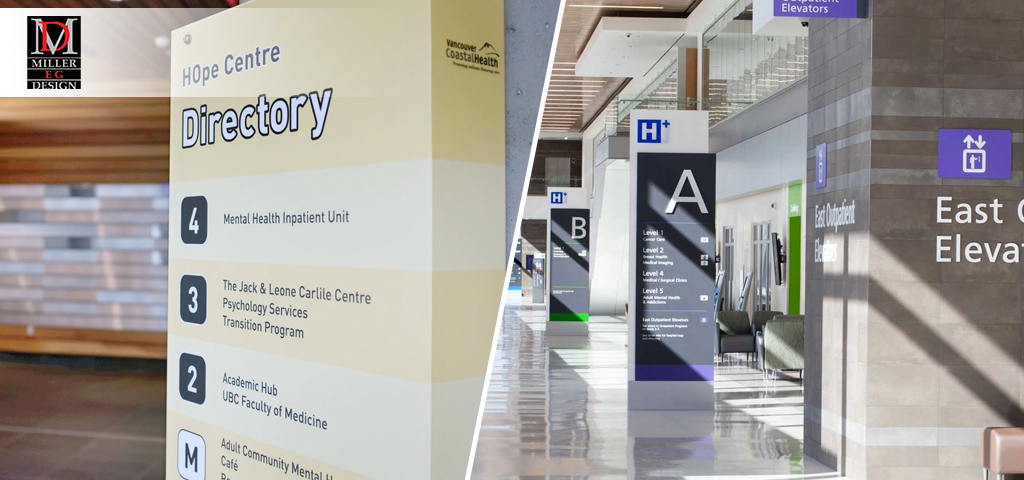You walk into a medical facility—already overwhelmed, already vulnerable—and suddenly, you’re lost. Signs contradict each other. Arrows point in all directions. You feel exposed, confused, even embarrassed asking for help again. If that’s ever been you, you already know why good wayfinding matters. But in behavioral health environments, the stakes are even higher. This isn’t just about directions—it’s about dignity.
At Miller EG Design, we understand that behavioral health spaces demand a different level of intention. The people entering these facilities are not just patients—they are individuals navigating deeply personal challenges. And the way a space communicates with them, visually and spatially, can either reinforce calm or deepen anxiety. That’s why we specialize in designing wayfinding systems that don’t just direct—but support, uplift, and respect.
Behavioral health facilities can be disorienting, especially when stress levels are already high. Poor signage can feel like an invisible barrier that increases feelings of helplessness. Our approach eliminates that barrier. We create environments where navigation feels intuitive, signage feels natural, and color palettes feel comforting. Every detail is rooted in empathy, because when patients feel lost, they’re not just asking, “Where do I go?”—they’re often asking, “Am I safe here?”
Designing for behavioral health isn’t about flashy signs or corporate branding—it’s about nonverbal clarity. It’s about reinforcing a patient’s sense of place and control. We incorporate clean typography, clear hierarchy, and culturally sensitive design elements to ensure every patient—regardless of literacy level or cognitive ability—feels oriented and included.
One of the most overlooked components of behavioral health design is the emotional impact of movement. Long, sterile hallways with abrupt signage can feel punitive. Our team rethinks how spatial flow and signage work together to gently guide rather than command. Curved pathways, soft transitions, and affirming language choices contribute to a patient experience that feels more humane.
We also understand that behavioral health care often extends to family members and caregivers, who are also navigating complex emotions and unfamiliar settings. A well-designed wayfinding system reduces frustration for everyone, minimizing noise at front desks, decreasing staff interruptions, and allowing caregivers to focus on the patient—not finding the right hallway.
Another key component is flexibility. Facilities evolve. Room functions change. Behavioral health services are constantly adapting to community needs. That’s why Miller EG Design creates modular, easy-to-update signage systems that allow your space to grow and change—without confusion. It’s a balance between durable design and adaptable function.
Lighting also plays a critical role. Harsh illumination can increase stress levels, while dim areas can feel unsafe or ambiguous. We coordinate wayfinding design with lighting strategy to ensure every sign is legible without glare and every space feels intentional. Visual calm equals emotional calm.
Ultimately, wayfinding is not about decoration—it’s about communication. And in behavioral health, that communication must be clear, quiet, and kind. At Miller EG Design, we’ve made it our mission to translate complexity into calm, and help facilities foster environments where patients feel respected from the moment they walk in the door.
If you’re ready to transform your space from confusing to compassionate, let’s talk. Miller EG Design is located at 315 Northpoint Pkwy SE, Suite F, Acworth, GA 30102. Reach us at (404) 947-6448 to begin designing a wayfinding system that truly supports the dignity and well-being of every person who enters your space.

